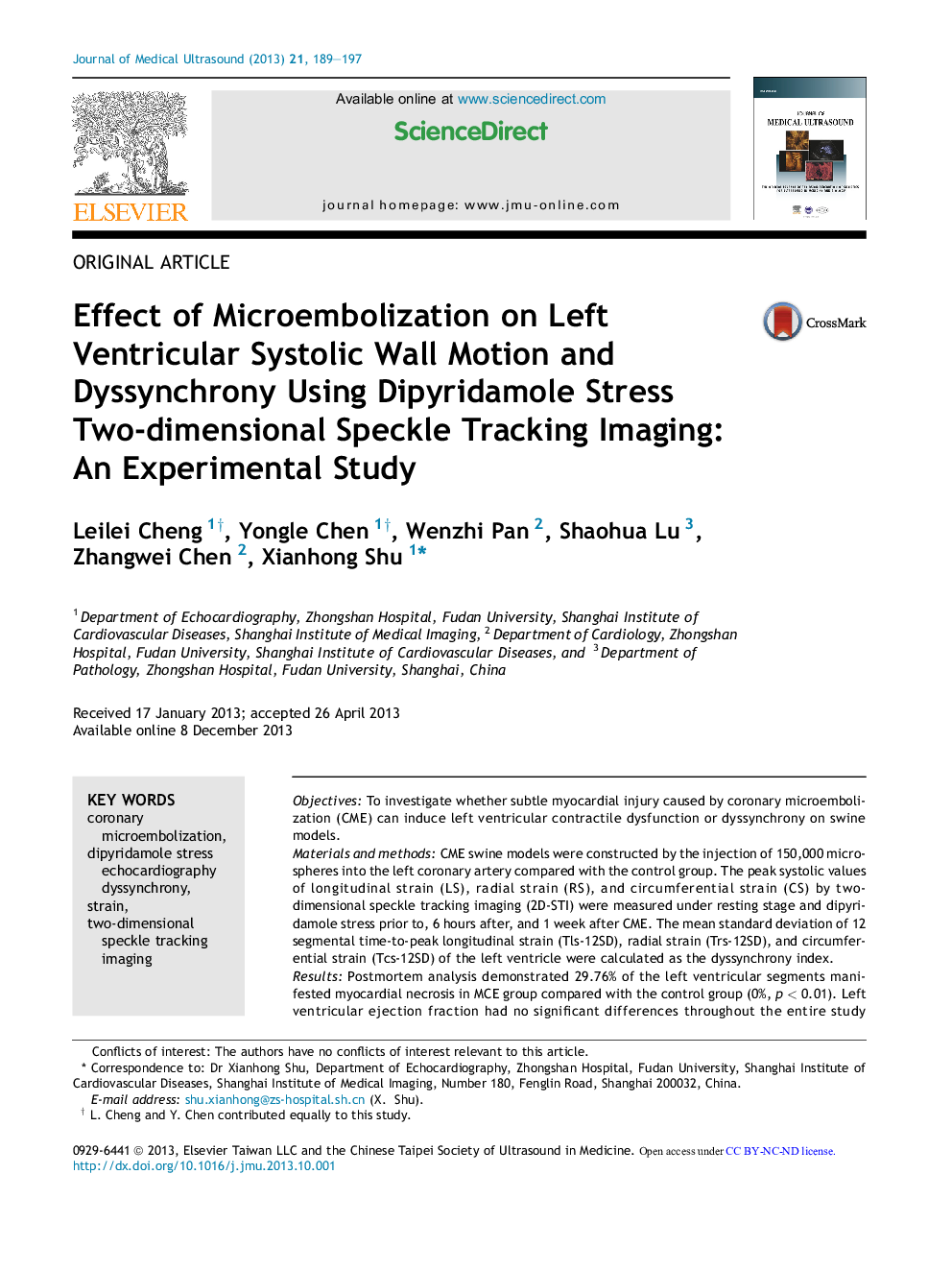| Article ID | Journal | Published Year | Pages | File Type |
|---|---|---|---|---|
| 4233107 | Journal of Medical Ultrasound | 2013 | 9 Pages |
ObjectivesTo investigate whether subtle myocardial injury caused by coronary microembolization (CME) can induce left ventricular contractile dysfunction or dyssynchrony on swine models.Materials and methodsCME swine models were constructed by the injection of 150,000 microspheres into the left coronary artery compared with the control group. The peak systolic values of longitudinal strain (LS), radial strain (RS), and circumferential strain (CS) by two-dimensional speckle tracking imaging (2D-STI) were measured under resting stage and dipyridamole stress prior to, 6 hours after, and 1 week after CME. The mean standard deviation of 12 segmental time-to-peak longitudinal strain (Tls-12SD), radial strain (Trs-12SD), and circumferential strain (Tcs-12SD) of the left ventricle were calculated as the dyssynchrony index.ResultsPostmortem analysis demonstrated 29.76% of the left ventricular segments manifested myocardial necrosis in MCE group compared with the control group (0%, p < 0.01). Left ventricular ejection fraction had no significant differences throughout the entire study (p > 0.05). In the CME group, compared with the baseline, LS on the basal anterior wall deteriorated from −9.72 ± 4.96 % to −6.35 ± 3.75 % (p < 0.05) and Tcs-12SD was prolonged from 85.00 ± 35.74 ms to 151.30 ± 75.14 ms at 1 week (p < 0.01) under resting stage. After dipyridamole infusing, a further decrease of contractility on all CME-related segments occurred at 6 hours and/or 1 week (p < 0.05–0.01). The deterioration of Tls-12SD achieved statistical significance at 1 week (157.66 ± 78.25 ms vs. 112.54 ± 62.52 ms, p < 0.05). Furthermore, Tcs-12SD was progressively delayed from 6 hours to 1 week (148.30 ± 45.53 ms and 162.45 ± 51.67 ms vs. 78.00 ± 40.17 ms, all p < 0.01).ConclusionSubtle cardiac systolic dysfunction as well as dyssynchrony caused by CME can be detected using dipyridamole stress 2D-STI sensitively. Moreover, left ventricular dyssynchrony could be affected even by slight myocardial injury.
